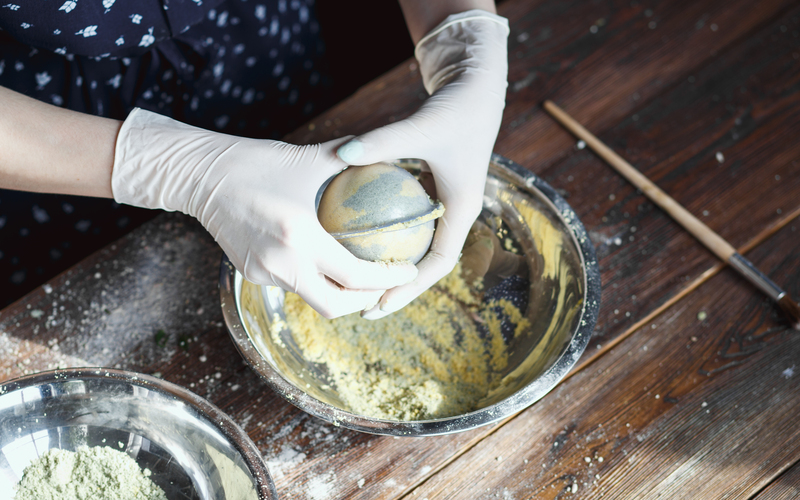Say Goodbye to Mineral Deposits: A Complete Guide to Descaling Your Kettle
Posted on 15/06/2024
There's nothing quite like a cup of hot tea or coffee to start your day off right. But have you ever noticed an unpleasant taste or residue in your beverage? This could be due to mineral deposits, also known as limescale, building up in your kettle. Not only can this affect the taste of your drinks, but it can also reduce the efficiency and longevity of your kettle. In this comprehensive guide, we'll explain what mineral deposits are, why they form in kettles, and most importantly, how to get rid of them for good.
What are Mineral Deposits?
Mineral deposits, or limescale, is the build-up of calcium and magnesium ions found in hard water. These minerals are harmless and do not pose any health risks. However, when heated, they form a white chalky substance that can coat the interior of your kettle and other household appliances. This accumulation can cause damage and inhibit proper functioning over time.

Why do they form in Kettles?
Kettles are particularly susceptible to mineral deposits because they come into direct contact with water on a regular basis. When water is heated, the minerals dissolve and attach themselves to the heating element and walls of the kettle. As the water evaporates during use, these minerals are left behind as a solid residue.
Not only does this affect the taste of your drinks, but it can also cause scaling on electric kettles which can lead to decreased efficiency and even breakage over time. If left untreated, mineral deposits can also harbor bacteria and affect the performance of your kettle.
How to Descale Your Kettle
To ensure that your kettle is clean and free from mineral deposits, it's important to descale it regularly. Here's a step-by-step guide on how to do it effectively:
1. Gather supplies: You will need white vinegar (or lemon juice), water, a soft cleaning cloth, and a soft-bristled brush.
2. Mix the solution: Fill your kettle with equal parts of white vinegar (or lemon juice) and water. Make sure the amount is enough to cover the mineral deposits.
3. Boil the solution: Turn on the kettle and let the solution boil for about 10 minutes. This will allow the acidic properties of the vinegar or lemon juice to break down the mineral deposits.
4. Let it sit: After boiling, turn off the kettle and let it sit for an additional 10-15 minutes to allow the solution to fully dissolve the mineral buildup.
5. Scrub away: Using a soft-bristled brush, gently scrub any remaining deposits from the walls and heating element of the kettle. For stubborn areas, use a mixture of baking soda and water to create a paste and scrub with a soft cloth.
6. Rinse thoroughly: Empty out the solution and rinse your kettle well with clean water.
7. Boil clean water: To remove any leftover vinegar or lemon juice odor, boil clean water in your kettle 1-2 times before using it for your next beverage.
Tips and Takeaways
- If you live in an area with hard water, it's important to descale your kettle at least every few months to prevent heavy buildup.
- Always use equal parts of vinegar (or lemon juice) and water when descaling.
- You can also use commercially available descaling solutions specifically designed for kettles if preferred.
- Letting your kettle cool down before descaling will make it easier to handle.
- To maintain a clean kettle, avoid leaving any residual water in it after use as this can cause minerals to accumulate.
- Regular descaling not only removes mineral deposits but also helps maintain proper functionality and prolongs the lifespan of your kettle.

Pros and Cons
Pros:
1. Eliminates mineral deposits: Descaling removes build-up of limescale that can affect the quality and taste of your beverages.
2. Cost-effective: Using natural ingredients like vinegar or lemon juice is a budget-friendly alternative to buying expensive descaling solutions.
3. Easy to do: The descaling process is simple and can be done with items found in most households.
4. Prolongs kettle lifespan: Regular descaling can prevent mineral deposits from damaging your kettle and affecting its performance, ultimately saving you from having to purchase a new one.
Cons:
1. Time-consuming: Depending on the amount of build-up, the descaling process may take some time.
2. Strong odor: The smell of vinegar or lemon juice might be unpleasant for some people, but it usually dissipates after boiling clean water in the kettle.
Conclusion
Mineral deposits can be a pesky problem when it comes to keeping your kettle clean and functioning properly. However, with regular descaling using simple ingredients like vinegar or lemon juice, you can easily remove these deposits and ensure that your beverages taste their best every time. Remember to descale your kettle regularly to maintain its efficiency and prolong its lifespan. So say goodbye to mineral deposits and hello to a perfectly clean kettle with these easy steps!









